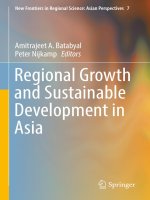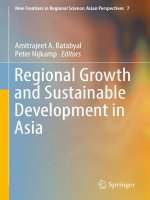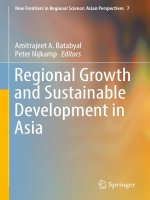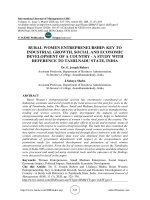Economic growth and economic development 40
Bạn đang xem bản rút gọn của tài liệu. Xem và tải ngay bản đầy đủ của tài liệu tại đây (83.97 KB, 1 trang )
Introduction to Modern Economic Growth
the quality of machines used in production, but also differences in productive efficiency resulting from differences in the organization of production, from differences
in the way that markets are organized and from potential market failures (see in
particular Chapter 22 on differences in productive efficiency resulting from the organization of markets and market failures). A detailed study of “technology” (broadly
construed) is necessary for understanding both the world-wide process of economic
growth and cross-country differences. The role of technology in economic growth
will be investigated in Chapter 3 and in later chapters.
1.7. From Correlates to Fundamental Causes
The correlates of economic growth, such as physical capital, human capital and
technology, will be our first topic of study. But these are only proximate causes of
economic growth and economic success (even if we convince ourselves that there is
a causal element the correlations shown above). It would not be entirely satisfactory to explain the process of economic growth and cross-country differences with
technology, physical capital and human capital, since presumably there are reasons
for why technology, physical capital and human capital differ across countries. In
particular, if these factors are so important in generating large cross country income
differences and causing the takeoff into modern economic growth, why do certain
societies fail to improve their technologies, invest more in physical capital, and accumulate more human capital?
Let us return to Figure 1.8 to illustrate this point further. This figure shows
that South Korea and Singapore have managed to grow at very rapid rates over the
past 50 years, while Nigeria has failed to do so. We can try to explain the successful
performance of South Korea and Singapore by looking at the correlates of economic
growth–or at the proximate causes of economic growth. We can conclude, as many
have done, that rapid capital accumulation has been was very important in generating these growth miracles, and debate the role of human capital and technology.
We can blame the failure of Nigeria to grow on its inability to accumulate capital
and to improve its technology. These answers are undoubtedly informative for understanding the mechanics of economic successes and failures of the postwar era.
But at some level they will also not have answered the central questions: how did
26









